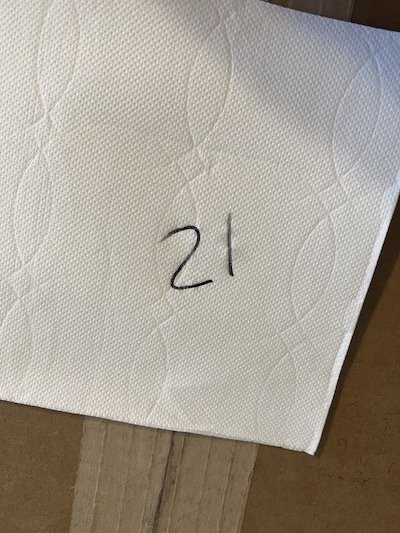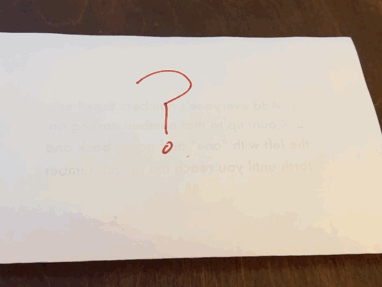Quinta Ideas
/If you don’t have Phill Smith’s Quinta, in one of the many forms it has been released, you can skip this post. It won’t make much sense. I’m not going to explain everything because I assume if you own it then you’ll be able to put two and two together. (Or instead of skipping this post you can buy Quinta. His Penguin Live lecture gives the basics of the effect. And his ebook gives a real deep dive into it.)
When I perform Quinta, I like to have the rules of the procedure clarified verbally (or printed somewhere) so that I can’t change anything. So the audience always know I’m counting from the left and starting with the first object as number 1. If you know Quinta, you know that requires me to control two variables. I have a number of techniques I use to control those variables. Here are a few…
[I’m almost positive these are my ideas, but I’ve learned Quinta from Phill in a bunch of different formats, so it’s possible one of these ideas was mentioned there and I forgot that’s where I learned it and thought I made it up. In which case, Phill, let me know so I can update this post.]
Idea #1
Number choice for two spectators.
“We’re going to try and create a synchronicity. Adam, think of a number between 1 and 50. Bob, I want you to try and focus in on Adam’s number. Adam, give him a hint. Is it odd or even. Okay… now Bob. Do you have something in mind? 40? Adam… what were you thinking of? 8. Hmm….
“Okay, that’s not actually the synchronicity I had in mind. I was just hoping for some dumb luck. As you can see on this sheet. Before the show I wrote some instruction. The first line says to add up your two thought of numbers…”
Idea #2
Number choice for one or more spectators
“Okay, we’re all going to write down a secret number from 1-30 on your napkin. Don’t let me see. Then we’re going to add up our numbers so we have one ‘group number’ none of us could have foreseen.”
Everyone (including you) writes down a number and places their napkin face down on the table. You go around the table with each person turning over their napkin to reveal their numbers.
By paying attention to how many odd numbers are revealed you’ll know if you have to say, “And my number was 12,” or, “And my number was 21.”
You can do this with just one other spectator. Or, however many you have. But after four or so people, the number could get pretty high. I don’t actually mind a high number myself. I like the time it takes to count. But I’m weird that way.
Idea #3
Pre Count Positioning Technique
This is an idea that can be used on its own, but for the sake of this description, presume it’s used with the previous idea.
On the table is a set of instructions that look like this
In each circle is a coin. The instructions are folded over so you can’t read them.
Now, depending on what the total is, you either do this
In which case the circles on the sheets are seen as placeholders for where to set the coins.
Or you do this
You let the coins slide out, and now those circles are just an illustration of what the spectator sees before them.
Either way, the instructions are so direct and definitive it would seem very unlikely the spectator would be able to think of this as a force.
Now, would I go to this trouble to force one in five coins? No, most likely not. I’m just explaining a basic concept here that can be extrapolated into a routine that has some meaning. This particular technique with the paper doesn’t need to force coins, of course. it could force any small flat object (which could be representative of some larger object or concept).
I have a similar technique to this that I use which works with any small non-flat object too. But that’s for another day.





